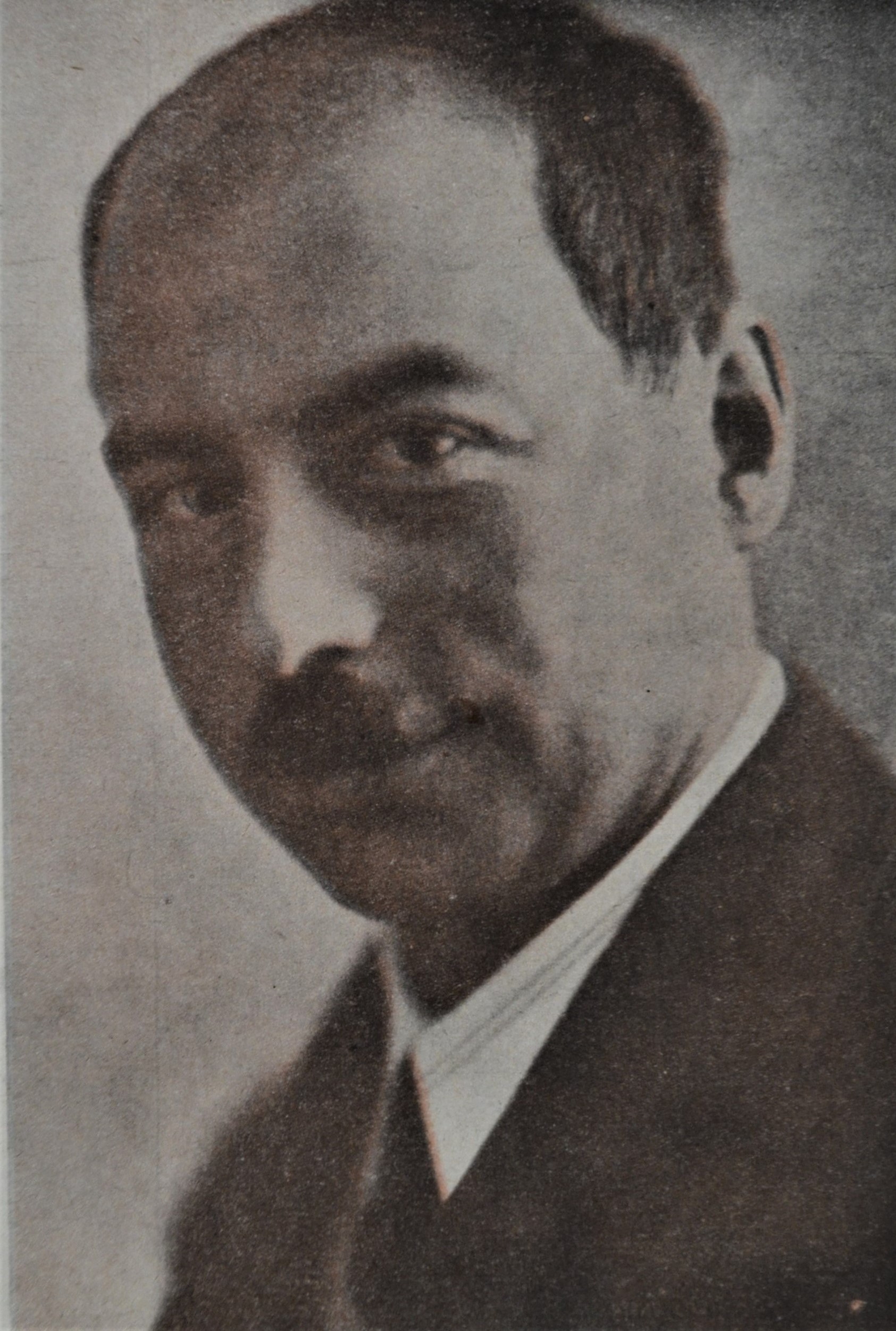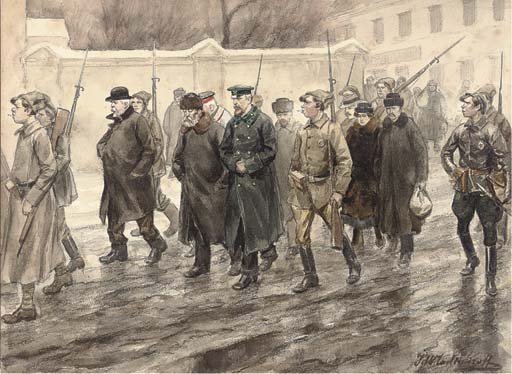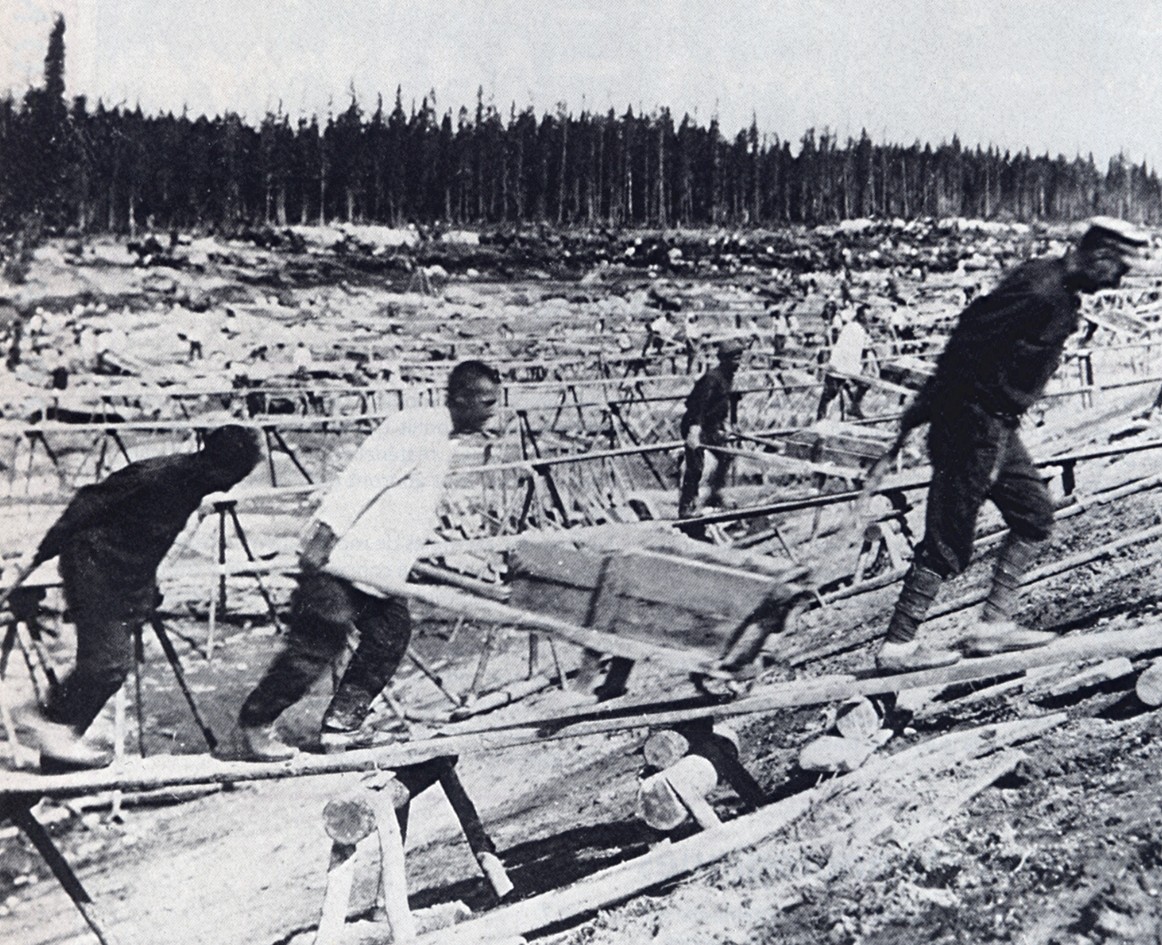|
Kulaks
Kulak (; russian: кула́к, r=kulák, p=kʊˈlak, a=Ru-кулак.ogg; plural: кулаки́, ''kulakí'', 'fist' or 'tight-fisted'), also kurkul () or golchomag (, plural: ), was the term which was used to describe peasants who owned over of land towards the end of the Russian Empire. In the early Soviet Union, particularly in Soviet Russia and Azerbaijan, ''kulak'' became a vague reference to property ownership among peasants who were considered hesitant allies of the Bolshevik Revolution. In Ukraine during 1930–1931, there also existed a term of pidkurkulnyk (almost wealthy peasant); these were considered "sub-kulaks". ''Kulak'' originally referred to former peasants in the Russian Empire who became wealthier during the Stolypin reform of 1906 to 1914, which aimed to reduce radicalism amongst the peasantry and produce profit-minded, politically conservative farmers. During the Russian Revolution, ''kulak'' was used to chastise peasants who withheld grain from the Bo ... [...More Info...] [...Related Items...] OR: [Wikipedia] [Google] [Baidu] |
Dekulakization
Dekulakization (russian: раскулачивание, ''raskulachivanie''; uk, розкуркулення, ''rozkurkulennia'') was the Soviet campaign of political repressions, including arrests, deportations, or executions of millions of kulaks (prosperous peasants) and their families. Redistribution of farmland started in 1917 and lasted until 1933, but was most active in the 1929–1932 period of the first five-year plan. To facilitate the expropriations of farmland, the Soviet government portrayed kulaks as class enemies of the Soviet Union. More than 1.8 million peasants were deported in 1930–1931. Robert Conquest (1986) '' The Harvest of Sorrow: Soviet Collectivization and the Terror-Famine''. Oxford University Press. .Nicolas Werth, Karel Bartošek, Jean-Louis Panné, Jean-Louis Margolin, Andrzej Paczkowski, Stéphane Courtois, '' The Black Book of Communism: Crimes, Terror, Repression'', Harvard University Press, 1999, hardcover, 858 pages, Lynne Viola ' ... [...More Info...] [...Related Items...] OR: [Wikipedia] [Google] [Baidu] |
Collectivization In The Soviet Union
The Soviet Union introduced the collectivization (russian: Коллективизация) of its agricultural sector between 1928 and 1940 during the ascension of Joseph Stalin. It began during and was part of the first five-year plan. The policy aimed to integrate individual landholdings and labour into collectively-controlled and state-controlled farms: ''Kolkhozes'' and ''Sovkhozes'' accordingly. The Soviet leadership confidently expected that the replacement of individual peasant farms by collective ones would immediately increase the food supply for the urban population, the supply of raw materials for the processing industry, and agricultural exports via state-imposed quotas on individuals working on collective farms. Planners regarded collectivization as the solution to the crisis of agricultural distribution (mainly in grain deliveries) that had developed from 1927. This problem became more acute as the Soviet Union pressed ahead with its ambitious industrializa ... [...More Info...] [...Related Items...] OR: [Wikipedia] [Google] [Baidu] |
First Five-year Plan
The first five-year plan (russian: I пятилетний план, ) of the Union of Soviet Socialist Republics (USSR) was a list of economic goals, created by Communist Party General Secretary Joseph Stalin, based on his policy of socialism in one country. The plan was implemented in 1928 and took effect until 1932. The Soviet Union entered a series of five-year plans which began in 1928 under the rule of Joseph Stalin. Stalin launched what would later be referred to as a "revolution from above" to improve the Soviet Union's domestic policy. The policies were centered around rapid industrialization and the collectivization of agriculture. Stalin desired to remove and replace any policies created under the New Economic Policy. The plan, overall, was to transition the Soviet Union from a weak, poorly controlled, agriculture state, into an industrial powerhouse. While the vision was grand, its planning was ineffective and unrealistic given the short amount of time given to mee ... [...More Info...] [...Related Items...] OR: [Wikipedia] [Google] [Baidu] |
Vladimir Lenin's Hanging Order
The Hanging Order is a telegram from Bolshevik leader Vladimir Lenin ordering the suppression and execution of captured participants in the kulak revolt in the Penza Governorate. It was first called the "Hanging Order" by the U.S. Library of Congress. The telegram was addressed to Penza Communists Vasily Kurayev (Penza Soviet chairman), Yevgenia Bosch (the chairwoman of Penza Governorate Party Committee) and Alexander Minkin (the chairman of Penza ispolkom) and dated 11 August 1918. __TOC__ Historical background During the summer of 1918, many of Russia's central cities, including Moscow and Petrograd, were cut off from the grain-producing regions of Ukraine, northern Caucasus, and Siberia by the civil war. As a result, hundreds of thousands of people were on the brink of starvation. The Penza Governorate was critical in providing food to the cities and the government used effective measures, such as prodrazvyorstka (forcible requisitioning), to collect grain from the kulaks. The C ... [...More Info...] [...Related Items...] OR: [Wikipedia] [Google] [Baidu] |
First Five-year Plan
The first five-year plan (russian: I пятилетний план, ) of the Union of Soviet Socialist Republics (USSR) was a list of economic goals, created by Communist Party General Secretary Joseph Stalin, based on his policy of socialism in one country. The plan was implemented in 1928 and took effect until 1932. The Soviet Union entered a series of five-year plans which began in 1928 under the rule of Joseph Stalin. Stalin launched what would later be referred to as a "revolution from above" to improve the Soviet Union's domestic policy. The policies were centered around rapid industrialization and the collectivization of agriculture. Stalin desired to remove and replace any policies created under the New Economic Policy. The plan, overall, was to transition the Soviet Union from a weak, poorly controlled, agriculture state, into an industrial powerhouse. While the vision was grand, its planning was ineffective and unrealistic given the short amount of time given to mee ... [...More Info...] [...Related Items...] OR: [Wikipedia] [Google] [Baidu] |
Joseph Stalin
Joseph Vissarionovich Stalin (born Ioseb Besarionis dze Jughashvili; – 5 March 1953) was a Georgian revolutionary and Soviet political leader who led the Soviet Union from 1924 until his death in 1953. He held power as General Secretary of the Communist Party of the Soviet Union (1922–1952) and Chairman of the Council of Ministers of the Soviet Union (1941–1953). Initially governing the country as part of a collective leadership, he consolidated power to become a dictator by the 1930s. Ideologically adhering to the Leninist interpretation of Marxism, he formalised these ideas as Marxism–Leninism, while his own policies are called Stalinism. Born to a poor family in Gori in the Russian Empire (now Georgia), Stalin attended the Tbilisi Spiritual Seminary before joining the Marxist Russian Social Democratic Labour Party. He edited the party's newspaper, '' Pravda'', and raised funds for Vladimir Lenin's Bolshevik faction via robberies, kidnappings and p ... [...More Info...] [...Related Items...] OR: [Wikipedia] [Google] [Baidu] |
Vladimir Lenin
Vladimir Ilyich Ulyanov. ( 1870 – 21 January 1924), better known as Vladimir Lenin,. was a Russian revolutionary, politician, and political theorist. He served as the first and founding head of government of Soviet Russia from 1917 to 1924 and of the Soviet Union from 1922 to 1924. Under his administration, Russia, and later the Soviet Union, became a one-party socialist state governed by the Communist Party. Ideologically a Marxist, his developments to the ideology are called Leninism. Born to an upper-middle-class family in Simbirsk, Lenin embraced revolutionary socialist politics following his brother's 1887 execution. Expelled from Kazan Imperial University for participating in protests against the Russian Empire's Tsarist government, he devoted the following years to a law degree. He moved to Saint Petersburg in 1893 and became a senior Marxist activist. In 1897, he was arrested for sedition and exiled to Shushenskoye in Siberia for three years, where he m ... [...More Info...] [...Related Items...] OR: [Wikipedia] [Google] [Baidu] |
Red Terror
The Red Terror (russian: Красный террор, krasnyj terror) in Soviet Russia was a campaign of political repression and executions carried out by the Bolsheviks, chiefly through the Cheka, the Bolshevik secret police. It started in late August 1918 after the beginning of the Russian Civil WarLlewellyn, Jennifer; McConnell, Michael; Thompson, Steve (11 August 2019)"The Red Terror" ''Russian Revolution''. Alpha History. Retrieved 4 August 2021. and lasted until 1922. Arising after assassination attempts on Vladimir Lenin and Petrograd Cheka leader Moisei Uritsky, the latter of which was successful, the Red Terror was modeled on the Reign of Terror of the French Revolution,Wilde, Robert. 2019 February 20.The Red Terror" ''ThoughtCo''. Retrieved March 24, 2021. and sought to eliminate political dissent, opposition, and any other threat to Bolshevik power. More broadly, the term is usually applied to Bolshevik political repression throughout the Civil War (1917–1 ... [...More Info...] [...Related Items...] OR: [Wikipedia] [Google] [Baidu] |
Labor Camp
A labor camp (or labour camp, see spelling differences) or work camp is a detention facility where inmates are forced to engage in penal labor as a form of punishment. Labor camps have many common aspects with slavery and with prisons (especially prison farms). Conditions at labor camps vary widely depending on the operators. Convention no. 105 of the United Nations International Labour Organization (ILO), adopted internationally on 27 June 1957, abolished camps of forced labor. In the 20th century, a new category of labor camps developed for the imprisonment of millions of people who were not criminals ''per se'', but political opponents (real or imagined) and various so-called undesirables under communist and fascist regimes. Some of those camps were dubbed "reeducation facilities" for political coercion, but most others served as backbones of industry and agriculture for the benefit of the state, especially in times of war. Precursors Early-modern states could exploi ... [...More Info...] [...Related Items...] OR: [Wikipedia] [Google] [Baidu] |
Verst
A verst (russian: верста, ) is an obsolete Russian unit of length defined as 500 sazhen. This makes a verst equal to . Plurals and variants In the English language, ''verst'' is singular with the normal plural ''versts''. In Russian, the nominative singular is , but the form usually used with numbers is the genitive plural – 10 verst, 25 verst, etc. – whence the English form. A (russian: межевая верста, literally 'border verst') is twice as long as a verst. "The verst of the 17th century was 700 sazhens or 1.49 km as against the 500 sazhens or 1.067 km it became at the time of Peter the Great." Finnish ''virsta'' In Finland Finland ( fi, Suomi ; sv, Finland ), officially the Republic of Finland (; ), is a Nordic country in Northern Europe. It shares land borders with Sweden to the northwest, Norway to the north, and Russia to the east, with the Gulf of Bo ..., a was originally 1,068.84 m according to the Swedish standard, but the Rus ... [...More Info...] [...Related Items...] OR: [Wikipedia] [Google] [Baidu] |
Richard Pipes
Richard Edgar Pipes ( yi, ריכארד פּיִפּעץ ''Rikhard Pipets'', the surname literally means 'beak'; pl, Ryszard Pipes; July 11, 1923 – May 17, 2018) was an American academic who specialized in Russian and Soviet history. He published several books critical of communist regimes throughout his career.Kenez, Peter, and Richard Pipe. “The Prosecution of Soviet History: A Critique of Richard Pipes' The Russian Revolution.” The Russian Review, vol. 50, no. 3, 1991, pp. 345–351. JSTORhttps://www.jstor.org/stable/131078 Accessed 4 June 2021. In 1976, he headed Team B, a team of analysts organized by the Central Intelligence Agency (CIA) who analyzed the strategic capacities and goals of the Soviet military and political leadership. Pipes was the father of American historian Daniel Pipes. Pipes was born to a Jewish family in Cieszyn, Poland, which fled the country as refugees after it was invaded by Nazi Germany. Settling in the United States in 1940, he became a ... [...More Info...] [...Related Items...] OR: [Wikipedia] [Google] [Baidu] |
Class Conflict
Class conflict, also referred to as class struggle and class warfare, is the political tension and economic antagonism that exists in society because of socio-economic competition among the social classes or between rich and poor. The forms of class conflict include direct violence such as wars for resources and cheap labor, assassinations or revolution; indirect violence such as deaths from poverty and starvation, illness and unsafe working conditions; and economic coercion such as the threat of unemployment or the withdrawal of investment capital ( capital flight); or ideologically, by way of political literature. Additionally, political forms of class warfare include legal and illegal lobbying, and bribery of legislators. The social-class conflict can be direct, as in a dispute between labour and management such as an employer's industrial lockout of their employees in effort to weaken the bargaining power of the corresponding trade union; or indirect such as a worker ... [...More Info...] [...Related Items...] OR: [Wikipedia] [Google] [Baidu] |

.jpg)

.jpg)




